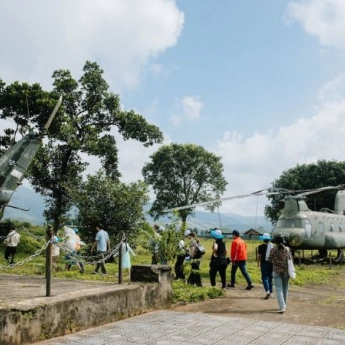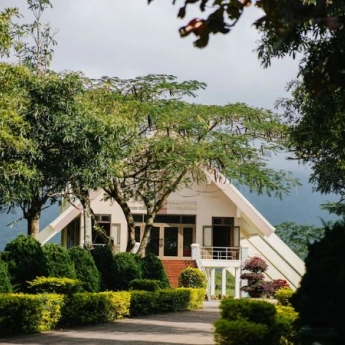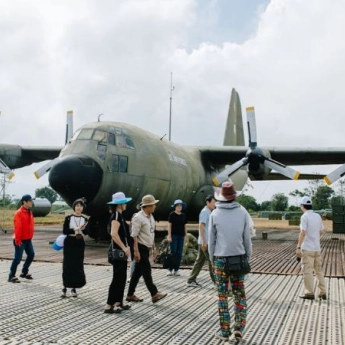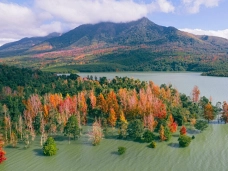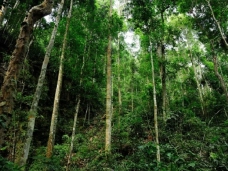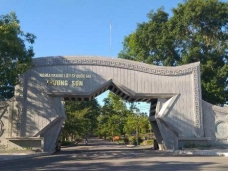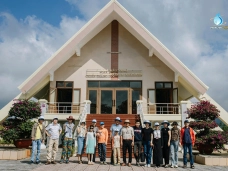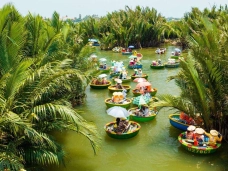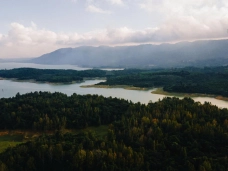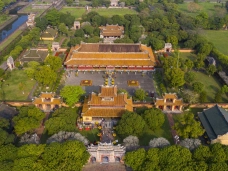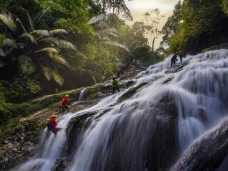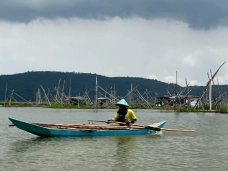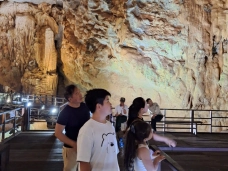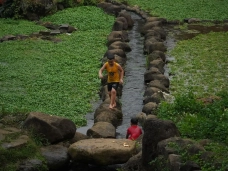Route 9 – Khe Sanh: The Wounded Trail and the Walk of Remembrance
08-05-2025 10:00
Location
Highlight Image
Where Fire Once Raged, and Willpower Was Measured
Deep within the vast Trường Sơn mountain range, Route 9 cuts across from Đông Hà to the border with Laos—a corridor once thunderous with artillery fire and the screams of war. Here, battles weren’t just written into history books; they were carved into the hearts of both sides.
This is Khe Sanh – a land scorched by fire, soaked in blood, where human worth was weighed not in gold, but in grit.
One Road – Two Fates
Route 9 was never just a strategic road. Located roughly 20 km from the Vietnam–Laos border, it served as a vital artery linking East and West Trường Sơn, connecting central military bases to the logistical lifeline across the Laotian frontier.
To the U.S., it was a chokepoint to cut off northern supply lines along the Hồ Chí Minh Trail. To the People’s Army of Vietnam (PAVN), it was a lifeline that must be held—at any cost.
At its heart stood Khe Sanh, a key military outpost right on Route 9. To the Americans, it was the “anchor point” of the McNamara Line—an ambitious plan to seal off infiltration routes using cutting-edge technology and overwhelming firepower. But the unforgiving terrain, dense jungles, and unbreakable will of the Vietnamese people turned it into a "fiery hell", a crucible of endurance.
The Battle of Khe Sanh – Willpower in the Flames
On January 21, 1968, the Battle of Khe Sanh erupted. Lasting 170 days (Vietnamese sources), it became one of the fiercest and most symbolic confrontations of the Vietnam War.
- U.S. and allied forces deployed between 45,000–69,000 troops, with 6,680 stationed at the Khe Sanh base, including U.S. Marines, ARVN units, and supporting forces.
- PAVN committed around 58,000 troops, of which 17,000 directly besieged Khe Sanh, while another 17,000 protected supply lines [3].
This battle, often dubbed the “Second Điện Biên Phủ”, stoked fears in Washington of a total defeat. Though the PAVN later withdrew, they achieved their strategic aims: shaking U.S. morale, igniting anti-war sentiment, and sowing doubt within the American public.
Route 9 – Khe Sanh: The Inferno That Devoured Lives
Khe Sanh wasn’t a single-day clash. It was a saga—a series of tightly calculated campaigns, each etched with its own strategic significance:
- Operation Scotland (Nov 1967 – Mar 1968): The U.S. fortified Khe Sanh into a military fortress, reinforced with dense Marine deployments, minefields, bunkers, and powerful artillery.
- Siege phase (Jan 21 – Apr 8, 1968): The PAVN launched a full-scale siege, deploying artillery bombardments and encirclement tactics that turned Khe Sanh into a fiery cauldron—a place haunted by echoes of Điện Biên Phủ.
- Operation Pegasus (Apr 1968): The U.S. deployed elite forces with helicopters, armored vehicles, and air support to break the siege. But the PAVN, having completed their mission, had already withdrawn.
- Operation Scotland II (post-Apr 1968): U.S. forces attempted to regain control, but by then, Khe Sanh had already become a “ghost battlefield,” abandoned as strategic focus shifted elsewhere.
The firepower was staggering. The U.S. dropped over 114,810 tons of bombs, fielded 2,000 aircraft and 3,300 helicopters. In response, Vietnam deployed 30 PT-76 tanks, 136 artillery pieces, and 150 anti-aircraft guns.
Estimated casualties: around 13,000 Americans and 11,900 Vietnamese [4].
Khe Sanh—a battlefield cloaked in smoke, but also a place where soldiers stood tall in the belief that “as long as we live, this land lives with us.”
Historic Remnants of Route 9 – Khe Sanh
Today, silence has replaced the fire. Yet, on Route 9 – Khe Sanh, visitors can still touch the pulse of history through enduring relics:
- Khe Sanh Victory Monument – A sacred symbol honoring heroic sacrifice.
- PT-76 Tank No. 268 – One of the vanguard vehicles, now displayed at Làng Vây.
- Fierce battlegrounds: Hill 881 North, Hill 861, Làng Vây, Huội San, and Tà Cơn airstrip—once echoing with fire, now echo with remembrance.
- Khe Sanh U.S. Combat Base Museum – Preserving C-130 wreckage, Huey and CH-47 helicopters, bunkers, and trenches—a living museum of war [6].
Khe Sanh – A Memory to Be Touched with Reverence
Today, Khe Sanh welcomes travelers seeking traces of war—once among Vietnam’s fiercest fronts. Yet beyond the heroism and quiet forests, there remain hollows of memory yet to be truly filled.
Such spaces of memory deserve care, not commercialization—not to repaint the past, but to preserve it with dignity. Every fragment here holds the blood and breath of history—a whispered reminder that peace is earned, not granted.
Preserving Route 9 – Khe Sanh’s historic sites is not merely about heritage—it’s an act of gratitude, a tribute to those who lived and fell on this land.
When honored with sincerity, the past does not fade. It becomes a quiet refuge, a guiding light for generations to come.
For a truly immersive experience, Phong Nha Viet offers meaningful journeys to explore this historic land. You’re invited to discover our curated programs:
- You can explore our 2-day-1-night tour to Cồn Cỏ Island, Vịnh Mốc Tunnels, Hiền Lương Bridge, and Cửa Tùng Beach [HERE], or take a deeper journey with the 3-day-2-night tour to Cồn Cỏ – Vịnh Mốc – Rú Lịnh [HERE].
- For those seeking a powerful historical journey, discover Khe Sanh with our Pickup Tour: the 2-day-1-night program [HERE], or the 3-day-2-night itinerary [HERE].
📚 You may find these stories inspiring:
- Cua Tung – The Harmony of Nature and Culture
- Vinh Moc Tunnels – Light Beneath the Earth
- Con Co Island – A Green Gem in the Ocean
- Quang Tri – A Land of Natural and Cultural Heritage
- Exploring the DMZ – Echoes of the Vietnam War
- Two Days in Khe Sanh, Huong Hoa – A Journey Through Time
- A Day of Forest Bathing in Ru Linh
Phong Nha Việt
Further Reading
1. Wikipedia tiếng Việt: Chiến dịch Đường 9 – Khe Sanh
2. Wikipedia tiếng Anh: Battle of Khe Sanh
3. NDA: Chiến dịch Đường 9 Khe Sanh
4. Báo Công An: 55 năm chiến thắng Đường 9 – Khe Sanh
5. Báo Quân khu 4: Chiến thắng Khe Sanh – Giải phóng Hướng Hóa




